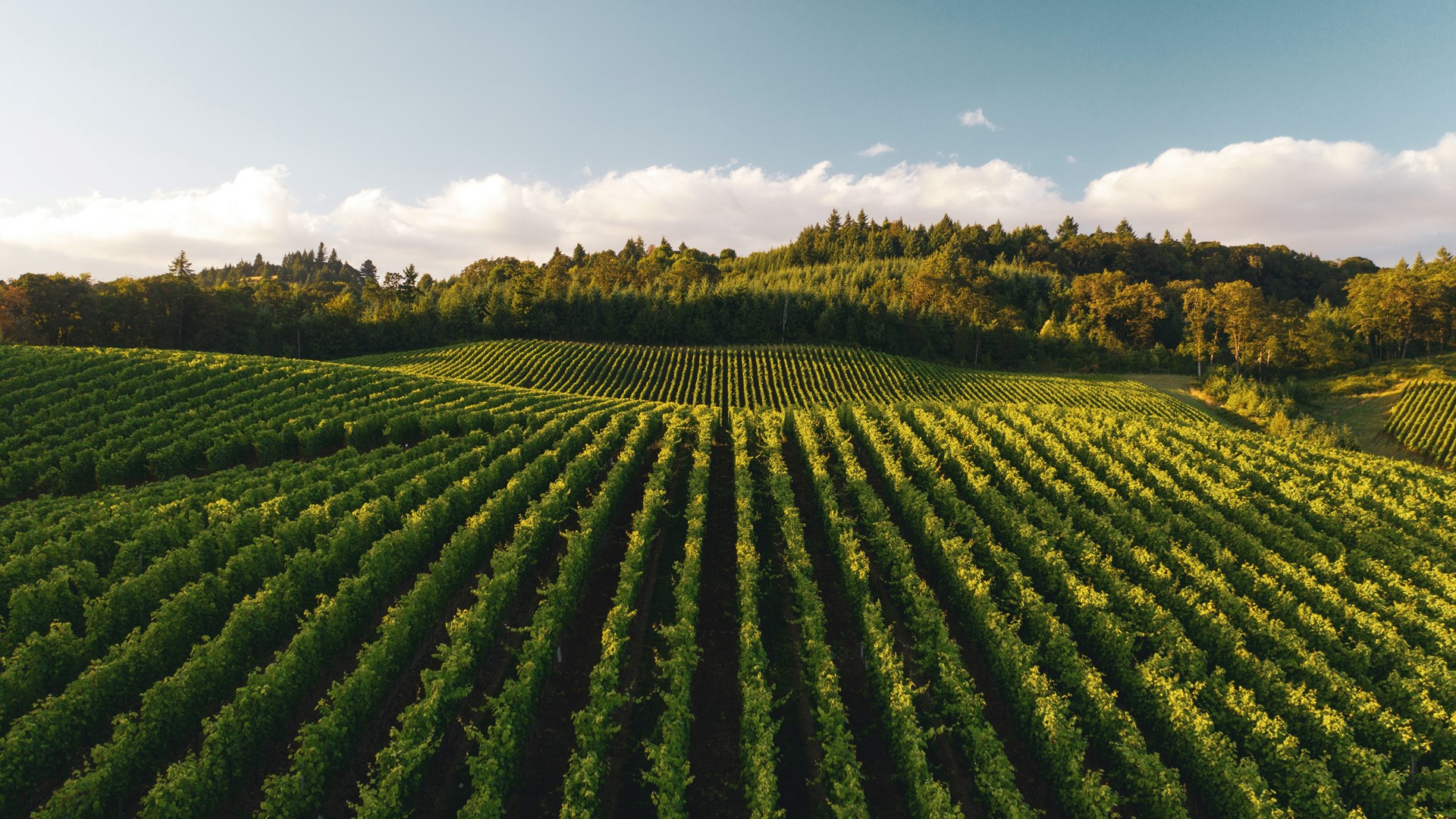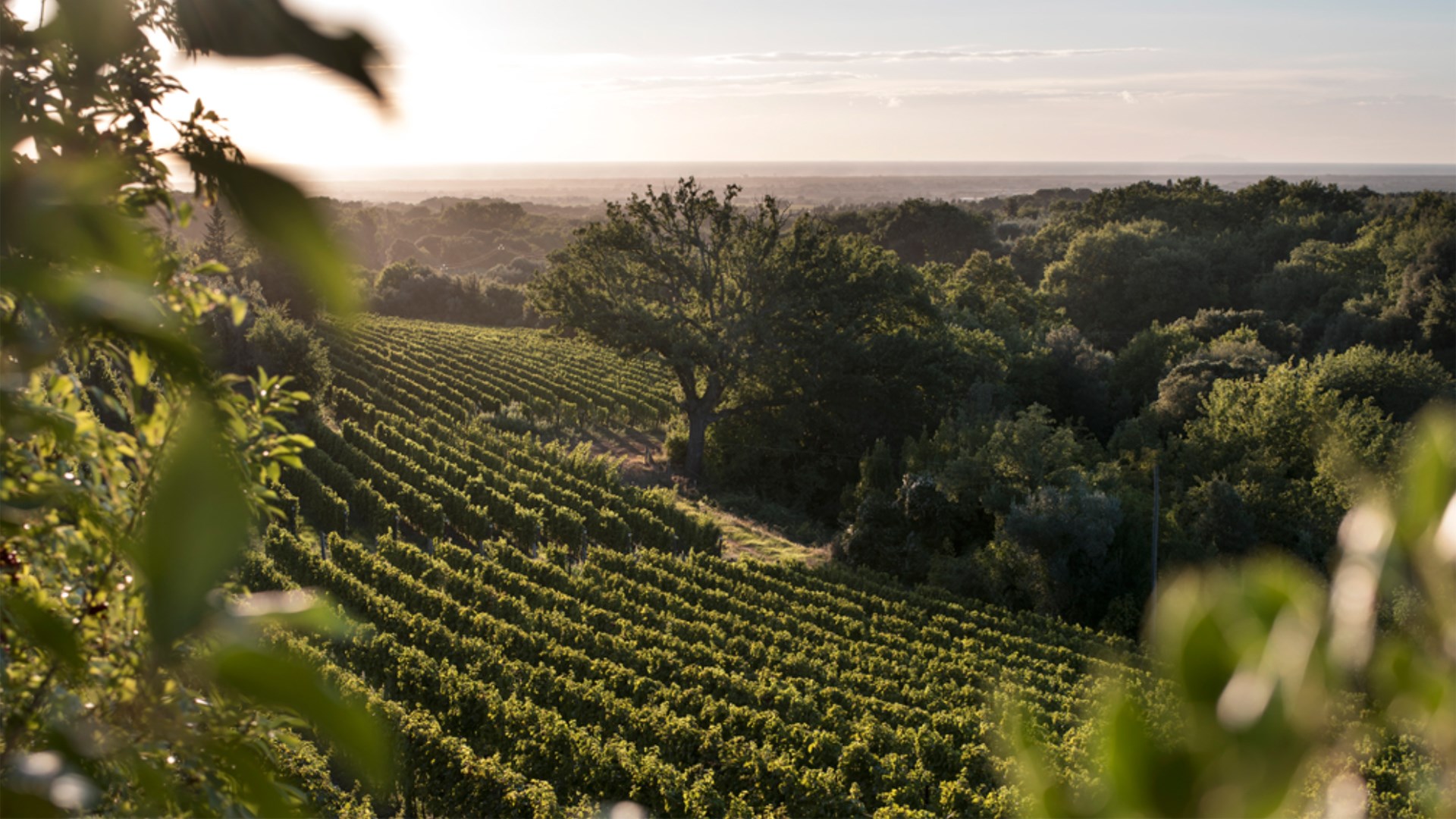Article - RareWine Academy
Wine Production: Organic, Biodynamic Or Sustainable?
Do you know the difference between conventional, organic, and biodynamic wine production? Gain insight into myths, production methods and so much more in the article below.
Good Wine Is Produced In The Vineyard
It cannot be underlined often enough. Good wine is produced in the vineyard. At least if you ask the winemakers themselves. In these years, there is a particularly strong focus on, what is happening in the vineyard - and for a good reason. The better raw materials you can grow, the better the basis for making good wine in the cellar. From a socio-political perspective, there are also opinions on manufacturing methods in the future, where the “green forms of manufacturing” are gaining ground.
The vineyard can be cultivated based on several different methods. There may be area-specific methods, historical traditions, or strong regional beliefs that one or the other method is the right one for the specific producer.
Making wine is basically quite simple. Harvest and press grapes, then the juice ferments into wine. In recent years, there has been a great deal of focus on the fact that the land should be cultivated with respect. Within the cultivation of grapes, there are many ways to approach them.
As a starting point, it must be assumed that all wine producers basically want to produce their wine as sustainably as possible. By sustainability is meant both environmental, social, and economic considerations. There is no clear definition of how to work most sustainably, on all parameters. Overall, we can divide winegrowing into four different categories:
- Conventional
- Organic
- Biodynamic
- Sustainable
Often you have prejudices about what is good and bad but let us settle right away; there are both good and less good producers in all four categories. If you want to circumvent the rules, then you can do it. Conversely, a wine producer can also have good intentions about treating the planet right, without being certified in the different categories.
Conventional Winegrowing
For conventional wine growing, the producer is subject to the agricultural regulations in his country. There will always be rules for, how much you can spray and with what. It is also possible to adjust the outcome with different elements during the production. During conventional wine production, it is permissible to regulate the juice with acid, sugar, and other ingredients that can regulate the balance of the wine. Sugar is added to increase the alcohol percentage in cooler vintages. The acid will be added to create better balance and freshness in the wine. In addition, you can regulate for color, mouthfeel, and general clarity of the wine. Of course, everything that can be added to adjust with is controlled within strict regulations from the EU and the individual countries.
Within the EU, each area has its own set of rules that are placed on top of the otherwise applicable legislation. This is especially when we talk about protected areas of origin like Cognac or Champagne, just to stay in the wine terms. These rules can cover everything related to the production of wine in that area, from planting, to growing, harvesting, etc.
In the conventional category, there are also winegrowers, who for one reason or another, are not certified in any way. It may be a small family winery that wants to work organically and/or biodynamically, but who cannot go through a bureaucratic process that is also costly.
Myth: Conventional wine is adjusted with all sorts of chemicals and other fruits. No, all wine is made from grapes. Basically, grapes are a cheap raw material, and it does not make sense to add other liquids to save money.
Organic Winegrowing
Organic viticulture is regulated according to a strict set of rules from the EU. And in the rest of the world, there are other sets of rules that apply. In some countries, the rules are stricter than we know from the EU - in other countries less strict. When wine is approved for sale within the EU's borders, the producer is in its right to affix the official green eco-leaf as a symbol. For the winemaker to be approved as an organic producer, the winemaker must go through a 3-year certification process, which is also costly.
As a starting point, organic viticulture is about treating the soil, rather than treating the plant. So main focus for the producer will be to strengthen the soil. This way, the plants get more resistant to plant diseases. In the vineyards, manure from animals and compost must be used. Mildew, which is the most widespread plant disease in European vineyards, can only be controlled with copper sulfate in a limited amount. As a rule of thumb, the winemaker can expect his yield to fall by just over 10%, when he has switched to organic production.
If there is a lack of alcohol in the grapes at the time of harvest, it can adjust with organic sugar or concentrated grape juice. The fermentation can be carried out with either natural or cultural yeast. In general, adjustments are only made to a lesser extent in the cellar, compared to what is allowed in conventional winemaking. Sulfites as preservatives may be used to a lesser extent in European wine, but in smaller quantities than in conventional wine.
Overall, it can be said that organic wine is being sprayed less in the vineyard and that the producer has had fewer opportunities to adjust in the wine cellar.
In this category, there will be both very quality-conscious producers who want to do things in a healthy way and producers who just want to ride the organic wave that rolls through Europe and large parts of the world – the so-called "green-washing".
Myth: Organic wine is cloudy and laden with strange aromas.
No more luckily. When the first attempts at organic wine came on the market, there were major problems with winegrowers, who were not skilled enough to make organic wine. That is no longer the case. Organic wine today is at the same quality level as conventional wine, at least.

Biodynamic Winegrowing
Biodynamic is not just organic but adds one more layer of complexity to the wine-growing practice. First, the winemaker must be organic, then he can turn biodynamic. With biodynamics, as a winemaker, you have to conform to a set of rules founded by Rudolf Steiner at the beginning of the 20th century. Today, biodynamics is controlled by several different companies, with Demeter being the most common. When there is a Demeter sticker on the wine, it is approved.
The mindset behind biodynamic agriculture is that everything is connected in a larger cosmos. Everything we do affects everything around us. What the biodynamic winegrower strives for is to create a vineyard in balance with itself - a vineyard that has built up its own natural defenses against diseases, moisture, etc. This system is built by spraying with natural biodynamic preparations. It is sprayed primarily with minerals and natural fertilizer from other crops and animals on the farm. There is also a rule that the farm must have 10% land that is not cultivated. This is in order to create better natural biodiversity. Many also adapt naturally to how the moon and stars move in the sky, because it is believed that it can influence the energy of the vineyard.
The great biodiversity in the vineyard can in some vintages really surprise. Understood in the sense that when the neighbors are attacked by rot, then the biodynamic vineyard can go free. The wildlife in the field can also actively help keep bad insects away. The healthy vineyard starts with healthy soil, which in turn provides active roots that provide energy to the wine. In this way, biodynamics believes that the wines achieve the greater taste of the place where they are grown.
Myth: Biodynamic agriculture cannot be scientifically proven, to have a positive effect on the wine.
Correct, it can be difficult to prove scientifically, why biodynamics gives better wines, but nevertheless, you find good winemakers who have previously made conventional wine and have gone through organic to biodynamic production, who now produce wines that are at a higher level. In a way, biodynamic production creates a better balance in the wines and with more purity in the various taste elements.
Sustainable Winegrowing
Sustainable wine growing must be the goal for all but can be difficult to define. In the optimal scenario, we are talking about sustainability in the vineyard, the winery, the surroundings, for employees, and on an economic scale for everyone around the winery.
There is no overall global certification for sustainability in wine production, but there are several local and national associations that have made regulations. The big problem for an overall certification is that in the individual areas it may be different what should count as sustainable. In some areas, there is plenty of water available, in other places recycling water throughout the winery is a significant factor in whether you are sustainable.
In South Africa, Fair Trade has been used as an indicator of, whether employees were treated properly. The rules that were minimum requirements in that scheme can in no way live up to the minimum requirements in Europe. This is just one example of how sustainability can be experienced differently.
Both France and California are really trying to put sustainability in order. Both countries have developed their own certifications, which are starting to gain ground.
In France, HVE (Haute Valeur Environnementale) certification is used. This is divided into 3 levels and focuses on four essential points: biodiversity, pesticide use, fertilizers, and water consumption. The producer must be approved by an external organ and is then allowed to put HVE sticker on the wines.
In California, a set of rules known as SIP (Sustainable In Practice) has been created and is controlled by its own association. SIP rises above both organic and biodynamic viticulture by focusing on energy, water, and social responsibility as some of the key points.
In addition to these two directions, there are several other providers of more or less unofficial sustainability programs.
Myth: Winemaking cannot be sustainable as one is torturing the earth.
With a sustainable approach to the vineyard, you create a natural balance in the soil. This means that you can cultivate the land for several years before it must lie fallow for a period.

Natural Wine
Natural wine is another term that thrives. It is a concept that is not defined, but where the intentions are certainly good. In general, it is a matter of the producer having minimal influence on the production of the wine, from vine to bottling. Minimal spraying, no adjustments in the basement, and no addition of sulfur. Sulfur addition in particular is a point that fills a lot. Therefore, it is not allowed to add sulfur either during production or bottling - for the purpose of making the wine appear as natural as possible. However, you must be aware that sulfur is the primary preservative in wine, so in many cases so-called “natural wines” can be more unstable in the bottle.
Wine can be grown and produced in many ways. Overall, it is about whether the winemaker has a good attitude about how the wine is made, and what impact he wants to make on nature. In all four categories, there may be producers who try to cheat, but also producers who are so quality-conscious that they go all the way. The best wines are usually made with a strong respect for nature.
The increased focus on sustainability is gaining ground and, in the years, to come we will see even large producers become more sustainable.
